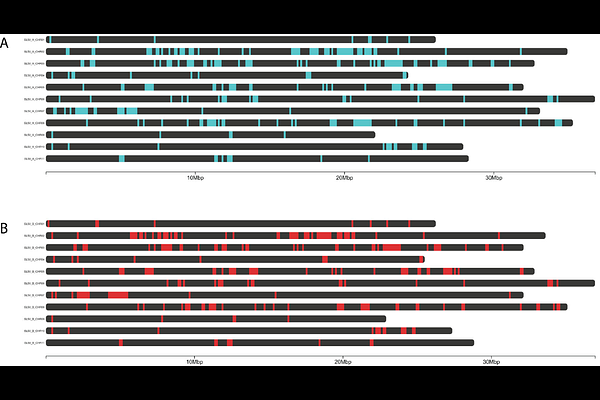A phased chromosome-level genome resource for a myrtle rust susceptible Syzygium luehmannii

A phased chromosome-level genome resource for a myrtle rust susceptible Syzygium luehmannii
Tobias, P.; Downs, J.; Martino, A. M.; Edwards, R. J.
AbstractSyzygium luehmannii is an Australian east coast endemic tree within the family Myrtaceae. Syzygium luehmannii is not known to be highly susceptible to the parasitic fungus causing myrtle rust, Austropuccinia psidii, however infections have been reported in the field, and in controlled inoculations. The capacity for this exotic pathogen to parasitise host trees, suggest that molecular targets are present in susceptible plants. While understanding resistance phenotypes is important for tree breeding and management, determining the key drivers for susceptibility may also provide useful additional research targets to avert infection. While there are several genome resources for plants within the large and globally diverse Syzygium genus, there is no diploid genome assembly (2n = 22), and no genome for S. luehmannii. We assembled the genome for S. luehmannii into the pseudo-phased, 11 chromosome pairs here termed haplotype A (370 Mbp) and B (357 Mbp). We annotated the predicted protein coding genes, and we specifically annotated the nucleotide-binding leucine rich repeat (NLR) type resistance genes as a useful resource for plant:pathogen studies. The high quality of this genome provides a base for studies on myrtle rust resistant and susceptible hosts to understand mechanisms of infection.